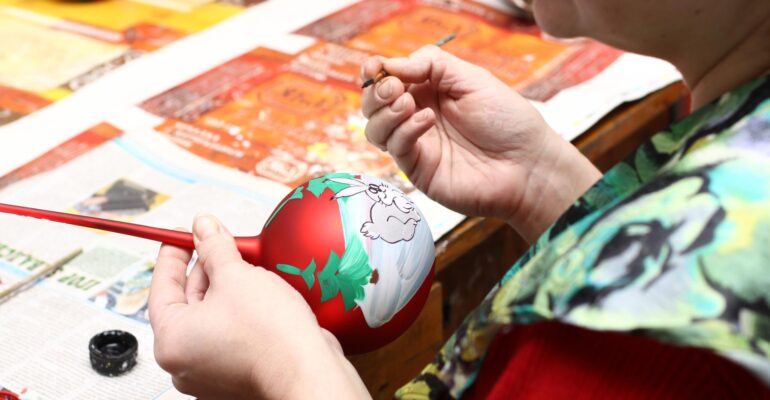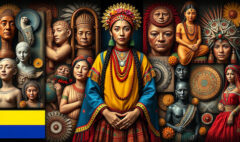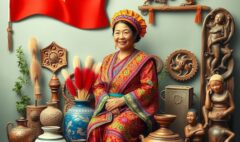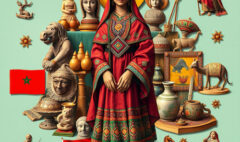Japan’s Traditional Arts: How Ancient Practices Thrive Today
Japan’s Traditional Arts: How Ancient Practices Thrive Today
In a rapidly evolving world dominated by technology and modern conveniences, it can be surprising to see ancient traditions not just surviving but thriving. Japan, a country renowned for its blend of the old and the new, has found ways to preserve and adapt its traditional arts such as Ikebana (flower arranging), calligraphy (*Shodo*), and the tea ceremony (*Chanoyu*) in the context of modern life. These practices, which date back centuries, are being revitalized by contemporary artists, schools, and even tourists, ensuring their continued relevance in the 21st century.
The Living Tradition of Ikebana, Calligraphy, and Tea Ceremonies
Japan’s traditional arts have always been more than just aesthetic pursuits; they are forms of self-expression, mindfulness, and a deep connection with nature. Each of these arts—Ikebana, calligraphy, and the tea ceremony—has its roots in spiritual practice and remains imbued with a sense of tranquility and balance.
– Ikebana, the art of flower arranging, emphasizes simplicity and harmony with nature. Practitioners focus on the lines, shapes, and spaces within an arrangement, reflecting a meditative approach.
– Calligraphy (*Shodo*) is more than just writing; it’s an art form that conveys the emotions and character of the artist through brush strokes and ink. It requires focus and precision, with a single stroke potentially defining the entire piece.
– The tea ceremony (*Chanoyu*) is a deeply spiritual practice rooted in hospitality and mindfulness. The intricate preparation and presentation of tea foster a sense of calm and ritual that feels timeless.
Each of these practices is steeped in tradition, yet, remarkably, they continue to be relevant in modern Japan.
Bringing New Life to Ancient Arts
Far from being confined to museums or elite circles, Japan’s traditional arts are being reinvigorated by modern practitioners who are blending the old with the new. These artists are finding creative ways to keep the essence of tradition alive while also adapting it to contemporary sensibilities.
Take, for example, the world of Ikebana. Modern artists are using unconventional materials such as metal, plastic, or recycled objects in their arrangements. This fusion of old and new not only brings a fresh perspective to Ikebana but also introduces the art form to a younger, more diverse audience.
Similarly, calligraphy has been adapted into new forms, with contemporary artists creating large-scale installations or blending traditional brushwork with digital media. Some calligraphers are collaborating with fashion designers or graphic artists to bring their art into modern pop culture.
Even the tea ceremony is evolving. While the traditional practice is still revered, modern tea houses are opening up in urban spaces, attracting younger generations who are eager to experience the mindfulness of the ritual in a way that fits into their busy lives.
The Role of Education and Communities in Preserving Tradition
The survival of these arts is not just dependent on individual artists but also on the role that education and community engagement play. In Japan, traditional arts are taught in schools, universities, and community centers, ensuring that each new generation has the opportunity to learn and engage with these practices.
Many schools offer Ikebana and Shodo as extracurricular activities, giving students hands-on experience with the art forms. There are also specialized workshops and seminars that invite both locals and international students to immerse themselves in these traditions. For example, some schools focus on teaching the philosophical underpinnings of the tea ceremony, while others might focus on perfecting technical skills like calligraphy brush strokes or flower arranging techniques.
These educational programs not only teach the art itself but also instill an appreciation for the cultural values of patience, mindfulness, and a connection to nature that are at the heart of these traditions.
The Role of Tourism in Preserving Japanese Traditions
In addition to schools and local communities, tourism has become a powerful force in the preservation of traditional Japanese arts. As interest in cultural tourism grows, visitors to Japan are increasingly seeking authentic experiences that allow them to engage with the country’s heritage. This has led to the rise of workshops and experiences aimed at introducing tourists to traditional arts.
Tourists can now participate in Ikebana workshops, where they learn the basics of flower arrangement, or attend calligraphy classes to try their hand at writing Japanese characters. Similarly, tea ceremony experiences offer a chance for visitors to step into a quiet, meditative space and engage in this centuries-old ritual.
By offering these experiences, traditional arts are not only kept alive but are also shared with a global audience, creating a bridge between cultures.
Lessons for Canadian Indigenous Artists
The success of Japan’s traditional arts in modern times can offer valuable lessons to Canadian Indigenous artists who are also seeking ways to preserve and revitalize their cultural practices. Indigenous art in Canada, like Japan’s traditional arts, is rooted in deep spiritual and cultural significance. Here are a few takeaways that could be applied:
1. Blending Tradition with Innovation:
Just as Japanese artists have found ways to modernize Ikebana, calligraphy, and the tea ceremony, Indigenous artists can explore innovative ways to integrate traditional motifs, materials, and practices with modern forms of expression. This could include using new technologies, collaborating across artistic disciplines, or experimenting with contemporary art forms.
2. Focus on Education:
Just as Japan incorporates its traditional arts into school curriculums, Indigenous communities could advocate for the inclusion of their cultural arts in schools, universities, and community programs. This would help younger generations understand the value and relevance of their heritage.
3. Community Involvement:
Workshops, community events, and public demonstrations are a great way to engage people with traditional arts. Indigenous communities in Canada could benefit from offering hands-on experiences, where participants can not only observe but also actively engage in creating Indigenous art, learning beadwork, or participating in storytelling sessions.
4. Cultural Tourism:
Just as Japan has capitalized on tourism to support its traditional arts, Canadian Indigenous artists could develop unique cultural tourism experiences. Offering workshops, guided tours of sacred sites, or live art demonstrations can generate both interest and income while promoting cultural preservation.
Conclusion
Japan’s traditional arts are thriving in the modern world thanks to the creativity of contemporary artists, the dedication of educators, and the role of tourism in sharing these practices with the wider world. As Canadian Indigenous artists look for ways to preserve and promote their cultural traditions, they can draw inspiration from Japan’s example—finding ways to balance ancient wisdom with modern innovation, ensuring their traditions continue to inspire future generations.
In both Japan and Canada, the preservation of traditional arts is not just about maintaining the past but about ensuring that these practices continue to evolve, inspire, and provide meaning in the present and future.











